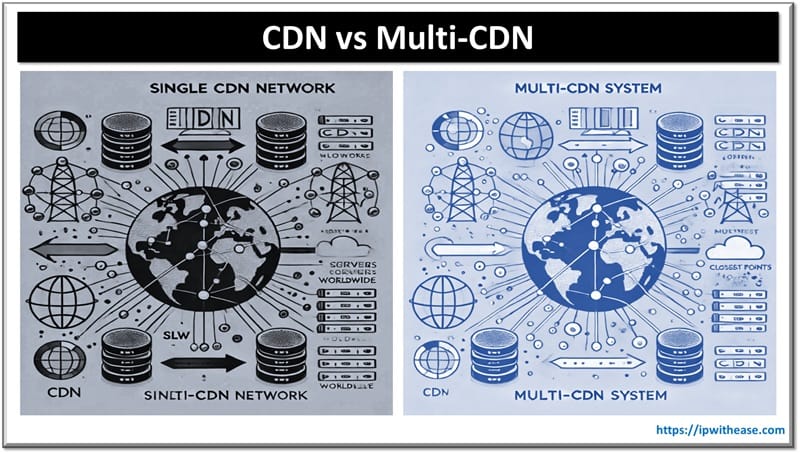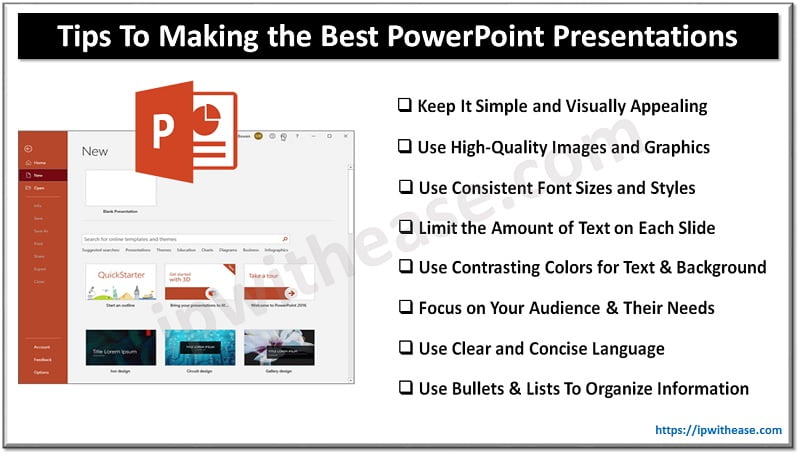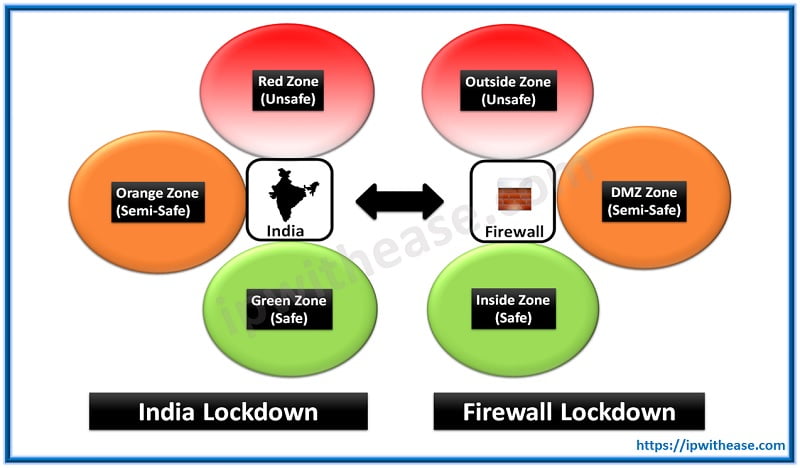Table of Contents
Have you ever wondered why some websites load super quickly while others take forever to show up? Much of that speed magic comes down to a Content Delivery Network, or CDN for short. A CDN is like a team of speedy delivery trucks spread worldwide, ensuring that the web content you love reaches you in the blink of an eye.
These networks are made up of servers across the globe tasked with delivering web content from the closest server to the user. This cuts down on load times and makes browsing smoother and faster.
But as great as CDNs are, they’re not perfect. Sometimes, a single CDN might struggle with network congestion, reach limitations in certain areas, or unexpected server downtime. That’s where multi-CDNs come into play.
Think of multi-CDN as leveling up from having one delivery team to having several, each with its routes and strengths. This setup lets websites switch between CDNs depending on which one is performing best at any given time, eliminating the risk of downtime and speeding up content delivery across the board.

Let’s unpack these concepts further and see why embracing a multi-CDN strategy could be a game changer for any website looking to improve its speed and reliability.
Understanding CDN
Ever clicked on a link and marveled at how quickly the webpage loaded? That speedy delivery is often thanks to a Content Delivery Network (CDN). A CDN is a group of servers sprinkled across various locations worldwide, designed to store and deliver copies of your web content, like videos, images, and web pages.
The goal? To minimize the distance information travels from the server to your screen, dramatically reducing latency (that annoying delay from when you request to load a webpage to the actual loading).
Here’s how it works: when you click on a website, a CDN retrieves the data from the closest server instead of fetching it from its central server. This is like having a mini-storehouse near your home rather than going to the central warehouse across the country for your online shopping.
The result is much quicker access to web content and a smoother, faster user experience. Companies specialize in optimizing this process, ensure that media-rich content doesn’t bog down performance.
CDNs are not just about speed; they also help reduce bandwidth costs. By caching content closer to the user, CDNs decrease the data an origin server has to process, leading to lower hosting costs. They’re particularly handy for sites with international audiences, ensuring that a visitor from Tokyo gets the same speedy service as someone in New York.
It’s not all smooth sailing. A single CDN setup can have hiccups, limited geographic coverage can lead to slower access in regions far from a CDN’s servers.
Exploring Multi-CDN
If you thought a single CDN was cool, let me introduce you to its big brother: the multi-CDN strategy. While a regular CDN does a fine job for many sites, multi-CDN takes things to a whole new level, especially for websites that serve a global audience. The primary goal here is to maximize content delivery speeds and reliability no matter where users are located around the world.
So, what exactly is a multi-CDN? It’s essentially a setup that employs multiple CDN providers instead of just one. This means a website can utilize the strengths of various CDNs to deliver content as efficiently as possible. If one CDN is particularly fast in Europe but slower in Asia, and another has the opposite strengths, a multi-CDN approach lets you get the best of both worlds.
But how does it work?
Multi-CDN strategies use smart traffic routing techniques to manage how content is delivered to users. One common method is DNS load balancing, which distributes user requests across several CDNs based on factors like server health and response time.
Then, geolocation-based routing selects the best CDN server based on the user’s physical location. Another sophisticated strategy involves performance-based traffic management, continually assessing which CDN performs best in real time and routes traffic accordingly.
This smart approach ensures that all users get the fastest and most reliable access to web content, no matter where they are. In digital content delivery, multi-CDN is like having an all-access pass to the fast lane! For a deeper dive into how a multi-CDN strategy can benefit your website, check out this detailed blog post on multi-CDN strategy.
Benefits of Multi-CDN
When delivering content online, two (or more) heads or, in this case, CDNs are better than one. Multi-CDN strategies bring many advantages that can significantly enhance website performance and reliability. Let’s break down why this approach is a game-changer.
Improved Performance and Lower Latency
Its ability to turbocharge website performance and slash latency is at the heart of the multi-CDN approach. By employing multiple CDNs, this strategy can choose the optimal CDN based on the user’s location. Imagine a user in Australia accessing content stored in a server located in Sydney rather than Los Angeles; the difference in speed is noticeable.
This geographical optimization ensures that content loads faster, providing a smoother user experience no matter where the audience is.
Enhanced Reliability and Resilience
What happens if a CDN goes down? In a single CDN setup, that could mean trouble. But with a multi-CDN strategy, the risk of downtime plummets. This setup provides a fail-safe by routing traffic to alternative CDNs if one fails, thus maintaining service continuity.
Global Coverage
Multi-CDN strategies shine when it comes to global reach. They enable extensive coverage by integrating multiple networks, thus avoiding the limitations of any single provider’s infrastructure.
Cost Efficiency
While it might sound expensive, multi-CDN can be more wallet-friendly in the long run. Businesses can save on data delivery costs by optimizing delivery paths and utilizing the most cost-effective CDN for specific regions.
Security Enhancements
Security is another major plus. Multi-CDN setups enhance protection by diversifying the points of attack, making it tougher for malicious activities like DDoS attacks to succeed. Spreading requests across multiple networks reduces the risk of overloading any single point, thereby safeguarding against threats more effectively.
In conclusion, adopting a multi-CDN strategy isn’t just about speeding up content delivery, it’s about making it smarter, safer, and more reliable. Whether you’re a small business or a large enterprise, the advantages are clear, making it a worthy investment for anyone serious about their online presence.
Implementing Multi-CDN
Diving into a multi-CDN setup isn’t just about using multiple CDNs, it’s about smart integration and strategic provider selection. Here’s how businesses can effectively implement this robust strategy.
Integration Strategies
To smoothly integrate multiple CDNs, businesses can leverage managed DNS services, which are crucial in directing traffic to the fastest and most available CDN network. These DNS services use advanced routing protocols to make real-time decisions about which CDN will best serve the user based on network health, geographic location, and current internet traffic conditions. This ensures that the content delivery is optimized and latency is minimized, making your website perform like a well-oiled machine.
Another key aspect is employing technologies like Traffic Director, which dynamically adjusts to changing conditions and reroutes user requests to the best-performing CDN. This adaptive solution can significantly enhance the reliability and speed of content delivery, ensuring users get the best possible experience no matter where they are.
Provider Selection
Choosing the right CDN providers is paramount. Not all CDNs perform the same across different regions. Businesses should evaluate CDN providers based on comprehensive performance records, their strengths in specific geographic locations, and their cost-efficiency.
By meticulously planning integration strategies and provider selection, businesses can harness the full potential of a multi-CDN approach, leading to a significantly enhanced global reach and user satisfaction. This strategic deployment caters to high-traffic demands and ensures that your digital content is resilient against various network issues, providing a consistently high-quality user experience.
Conclusion
Throughout this discussion, we’ve explored the nuances between traditional single CDN setups and the more dynamic multi-CDN configurations. While a single CDN can enhance content delivery, a multi-CDN strategy elevates this to new heights, optimizing performance, reliability, and global reach. For businesses aiming to thrive in a globally connected digital environment, adopting a multi-CDN approach isn’t just beneficial; it’s essential. This strategy ensures robust and efficient content delivery, significantly reduces the risk of downtimes, and enhances security measures. Embracing multi-CDN is a strategic move that can set a business apart in today’s fast-paced digital landscape.
ABOUT THE AUTHOR
IPwithease is aimed at sharing knowledge across varied domains like Network, Security, Virtualization, Software, Wireless, etc.



